Best movies & TV Shows like Mirmo Zibang!
A unique, carefully handpicked, selection of the best movies like Mirmo Zibang! . If you liked Mirmo Zibang! then you may also like: Battle B-Daman, H.R. Pufnstuf, Fancy Lala, Pumpkin Scissors, Black Blood Brothers and many more popular movies featured on this list. You can further filter the list even more or get a random selection from the list of similar movies, to make your selection even easier.
Mirmo de Pon! is a manga series written by Hiromu Shinozuka and serialized in Ciao magazine from 2001 Jul through 2005 Dec. It was also published in twelve collected volumes by Shogakukan. The manga series was awarded the 2003 Kodansha Manga Award and the 2004 Shogakukan Manga Award for children's manga. The series was licensed for an English language release in North America by Viz Media. Four months later, the show aired in Japan for the first time. An anime series named Wagamama Fairy: Mirumo de Pon! by Studio Hibari was adapted from the manga. It premiered in Japan on TV Tokyo on April 6, 2002, and ran for 172 episodes until September 27, 2005. The anime series is also licensed by Viz Media for an English language release in North America, and by ShoPro Entertainment, as Mirmo!.
Mirmo Zibang!
You may filter the list of movies on this page for a more refined, personalized selection of movies.
Still not sure what to watch click the recommend buttun below to get a movie recommendation selected from all the movies on this list
H.R. Pufnstuf
H.R. Pufnstuf is a children's television series produced by Sid and Marty Krofft in the United States. It was the first Krofft live-action, life-size puppet program. The seventeen episodes were originally broadcast from September 6, 1969 to December 27, 1969. The broadcasts were successful enough that NBC kept it on the Saturday morning schedule until August 1972. The show was shot in Paramount Studios and its opening was shot in Big Bear Lake, California. Reruns of the show aired on ABC Saturday morning from September 2, 1972 to September 8, 1973 and on Sunday mornings in some markets from September 16, 1973 to September 8, 1974. It was syndicated by itself from 1974 to 1978 and in a package with six other Kroft series under the banner Kroft Superstars from 1978 to 1985. In 2004 and 2007, H.R. Pufnstuf was ranked #22 and #27 on TV Guide's Top Cult Shows Ever.
Fancy Lala
Fancy Lala, known in Japan as Fancy Lala, the Magic Stage is a magical girl anime series produced by Studio Pierrot in 1998. A two-volume manga adaptation by Rurika Kasuga ran in Ribon. The original designs were created by Akemi Takada, who worked on many of the 80's Studio Pierrot series. The anime series has been licensed for English release by Bandai Entertainment.
Pumpkin Scissors
Pumpkin Scissors is a manga created and authored by Ryotaro Iwanaga. Originally serialized in Magazine GREAT in 2002 it was later moved to Monthly Shonen Magazine in October 2006. The manga has been licensed by Del Rey. An anime adaptation of Pumpkin Scissors has been released, produced by Gonzo and AIC, which began airing on October 2, 2006 across several Japanese television stations and ended with the 24th episode on March 19, 2007. The series was originally licensed to the North American market by ADV Films for $780,000. In 2008 it became one of over thirty titles transferred from ADV Films to FUNimation, the main distributor of anime in the English speaking world.
Black Blood Brothers
Black Blood Brothers, also known as BBB, is a light novel series written by Kōhei Azano and illustrated by Yuuya Kusaka. In 2006, Studio Live and Group TAC produced an anime based on the series. It is directed by Hiroaki Yoshikawa. It was licensed for North American release by Funimation Entertainment, with the first DVD being released in February 2008.
Someday's Dreamers
Someday's Dreamers is a manga written by Norie Yamada and illustrated by Kumichi Yoshizuki. It was serialized in Kadokawa Shoten's Comic Dragon magazine from May 2002 to January 2003 and was later collected in two bound volumes. In 2006, Tokyopop released the manga in the United States under the name Someday's Dreamers. Someday's Dreamers was also adapted into an anime series that was produced by J.C.Staff under the direction of Masami Shimoda. It is loosely based on the storyline of the first manga series with new characters added to the story. It ran for a total of 12 episodes on TV Asahi and was later licensed by Geneon Entertainment USA. However, due to the closure of Geneon USA, the series has been relicensed by Sentai Filmworks. Another story set in the same universe, Someday's Dreamers: Spellbound, written and drawn by the same author and illustrator, was serialized in Kadokawa Shoten's Comic Dragon Age. It ran from December 2003 to February 2006 and was later released in five bound volumes. In 2006, Tokyopop released the manga in the United States under the name Someday's Dreamers: Spellbound.
Samurai Gun
Samurai Gun is a manga series written and illustrated by Kazuhiro Kumagai and serialized in Weekly Young Jump. It was adapted into a 13-episode anime series directed by Hideki Sonoda. The anime is licensed in the United States, Canada, the United Kingdom and Germany by ADV Films, which co-financed the series' production. There has been no announcement of the manga being translated into the English language. As the title suggests, it features samurai using guns.
Miracle Girls
Miracle Girls is a Japanese manga written and illustrated by Nami Akimoto. It was adapted into an anime series by Nippon Animation in 1993. Tokyopop has licensed the manga for English release in North America.
Earl and Fairy
Hakushaku to Yōsei is a series of light novels written by Mizue Tani and published in Japan by Shueisha. The story is serialized in Cobalt magazine and illustrated by Asako Takaboshi. Shueisha has commercially released two drama CDs and a manga adaptation has begun serialization in The Margaret since the September issue in 2008. An anime adaptation was broadcast from September to December 2008. A visual novel for the PlayStation 2 was released on April 30, 2009.
Gallery Fake
Gallery Fake is a Japanese manga by Fujihiko Hosono. In 1996, it received the Shogakukan Manga Award.
Magikano
Magikano is a manga series by Takeaki Momose, which was later adapted into an anime series, directed by Seiji Kishi and written by Hideki Mitsui. The anime series was also broadcast by Animax, who adapted and dubbed the series into English for broadcast across its English language networks in Southeast Asia and South Asia from February 2007, where the series received its English language premiere. ADV Films has licensed the rights for the North American release of Magikano on DVD for $65,000, and released the first volume on December 4, 2007. ADV Films' Anime Network began airing the anime on January 3, 2008 on their Subscription On Demand platform. On March 6, 2008 the anime began airing on their Free On Demand platform. In July 2008, the series became one of over 30 ADV titles to be transferred to Funimation.
Maria Holic
Maria†Holic is a Japanese manga series written and illustrated by Minari Endō, the author of Dazzle. The manga was first serialized in the Japanese seinen manga magazine Monthly Comic Alive on June 27, 2006, and is published by Media Factory. The manga was licensed by Tokyopop with the first volume in English being released in September 2009. The first anime adaptation animated by Shaft aired in Japan between January and March 2009. A second anime season, Maria†Holic: Alive, premiered on April 8, 2011. Both seasons of the anime series have been licensed by Sentai Filmworks, and the first season is being distributed by Section23 Films.
Bambino!
Bambino! is a Japanese cooking manga written and illustrated by Tetsuji Sekiya. The manga has been serialized in Shogakukan's seinen magazine Big Comic Spirits. As of February 2009, Shogakukan has published 14 bound volumes of the manga. It received the 2008 Shogakukan Manga Award for seinen/general manga along with Takeshi Natsuhara's and Kuromaru's Kurosagi. NTV broadcast the live-action TV drama from April 18, 2007 to June 27, 2007. It was broadcast in the United States, Canada, and Puerto Rico by TV Japan, an affiliate of NHK, from January to March 2008.
Pugyuru
Pugyuru is a Japanese four-panel comic strip by Tohiro Konno. The manga was first serialized in the Japanese manga magazine Monthly Magazine Z in June, 2001. Pugyuru was adapted into an anime series that was broadcast on April 12, 2004 on the television station Kids Station. The initial broadcast lasted for thirteen episodes and ended on July 5, 2004.
Antique Bakery
Antique Bakery is a manga by Fumi Yoshinaga depicting the lives of four men who work in a small bakery. It was published in Japan by Shinshokan and in English by Digital Manga Publishing. The series won the 2002 Kodansha Manga Award for shōjo manga. The manga was adapted as a Japanese TV drama, with the title Antique or Antique Cake Store, that was broadcast on Fuji TV in 2001, an anime TV series, airing on July 3, 2008 on noitaminA, and a Korean live-action movie.
Saikano
Saikano: The Last Love Song on This Little Planet. is a manga, anime, and OVA series by Shin Takahashi, creator of Iihito and Kimi no Kakera. Saikano was originally serialized in Shogakukan's Big Comic Spirits magazine. A live-action movie adaptation was released in Japan on January 28, 2006 with Aki Maeda starring as Chise. The Saikano manga and anime series has been licensed and is being distributed by Viz Media in English in North America. The anime series is distributed in the UK by Manga Entertainment. Although the city is not mentioned by name in the series, many of the locations used in Saikano can by all probability be found in Otaru-shi, west of Sapporo. The train station, "Hell Hill", the Asahi Observation Hill, the view over the harbor, and the school all have similar looking counterparts in the city of Otaru.
Beyond the Heavens
Sōten Kōro is a Japanese manga by manga artist King Gonta, adapted from an original story by Hagin Yi. It was serialized by Kodansha in the manga anthology magazine Weekly Morning from 1994 to 2005. After Hagin Yi died of cancer in September 1998, King Gonta picked up the story himself. A total of 409 chapters were published and compiled into 36 separate books. In 1998, it won the 22nd Kodansha Manga Award in the general category. There are no published English translations of it, but a color art compilation book released in 2007 has the English subtitle Beyond the Heavens on the cover, suggesting that it is the accepted English translation of the title. In addition, the last chapter of the series is also titled in English Beyond the Heavens. In Japan, Sōten Kōro was advertised by its publisher as "Neo-Sangokushi", which may be translated as "Neo Romance of the Three Kingdoms". In April 2009, the series was made into an anime series by Madhouse.
Tokyo Underground
Tokyo Underground is a manga series by Akinobu Uraka and published by Enix. It became an anime series, produced by Studio Pierrot and shown on the TV Tokyo Network from April 2 until September 24, 2002. The TV series was released on DVD by Geneon Entertainment in the US and Canada, released as a boxset by Manga Entertainment in the UK and by Tokyo Night Train in Australia. It also aired in Canada on the digital channel G4techTV Canada, starting on July 22, 2007 at 8:30 pm ET/PT.
Princess Resurrection
Princess Resurrection is a Japanese horror comedy manga by Yasunori Mitsunaga. The manga was serialized monthly in Monthly Shōnen Sirius magazine and published by Kodansha. A 26-episode anime series by Madhouse aired on TBS in 2007. Both the manga and anime are available in North America with the manga licensed by Del Rey Manga and the anime licensed by Sentai Filmworks and available on the Anime Network website. A new OVA series has been made by Tatsunoko Production with the first episode released in December 2010, along with the 13th volume of the manga, the second episode for the 14th volume, and the third episode for the 16th volume. A spin-off manga, Naqua-Den, which stars a side-character from Princess Resurrection as the main character, was released in 2012 currently with two volumes.
Magical Angel Creamy Mami
Creamy Mami, the Magic Angel is a magical girl anime series by Studio Pierrot which aired from 1983 to 1984 on Nippon Television. It went on to have five OVA adaptions and featured in other Studio Pierrot special presentations. A three volume manga was released during the original TV run, with the story written by Kazunori Itō and art by Yuuko Kitagawa. This was the first of five magical girl anime to be produced by Studio Pierrot, and the first of these to feature the designs of Akemi Takada. In 2005, the web-poll for TV Asahi's top-100 anime of all time saw Creamy Mami, the Magic Angel poll 82nd. The series is currently streaming in North America via Yomiuri Group's planned Anime Sols video service, as of spring 2013. Thus far, a limited DVD release of the first thirteen episodes has been successfully crowd-funded at Anime Sols, with the second set of episodes currently in crowd-fund mode.
Guyver: The Bioboosted Armor
Guyver: The Bioboosted Armor is a Japanese anime series based on the long-running manga series, Bio Booster Armor Guyver, written by Yoshiki Takaya, adapting chapters 1 - 59 of the manga. The production was in association with ADV Films and Kadokawa Shoten. The series first episode aired in Japan on August 6, 2005 and the last episode aired on February 18, 2006. The series aired in North America on December 20, 2010, on the FUNimation Channel.
Kämpfer
Kämpfer is a Japanese light novel series by Toshihiko Tsukiji, with illustrations by Senmu. The series contains 15 volumes published by Media Factory under their MF Bunko J imprint between November 2006 and March 2010. The main series covers 12 volumes, while the remaining three are short story collections. A manga adaptation by Yu Tachibana started serialization in the April 2008 issue of Monthly Comic Alive. A 12-episode anime adaptation aired in Japan between October and December 2009 on TBS, concluded in spring 2011 with Kämpfer für die Liebe. The series has extensive use of the German language.
Seikimatsu Occult Academy
Occult Academy is a Japanese anime television series produced by A-1 Pictures and Aniplex and directed by Tomohiko Itō. The 13-episode anime premiered in Japan on the TV Tokyo television network on July 6, 2010. Occult Academy is the third project of Anime no Chikara. It was shown by Crunchyroll an hour after the Japanese broadcast. A manga adaptation of the anime is currently serialized in Media Factory's Monthly Comic Alive. A series of DVD/Blu-ray releases are made over six volumes. Volumes one through five each contain two episodes from the series and comes with extras, such as bonus songs sung by various voice actors for the characters. The final volume covers the last three episodes There are also four spinoff episodes, the first of which is included with the second volume. The series has been picked up in North America by NIS America, who released the series on Blu-ray on May 8, 2012.
SKET DANCE
SKET DANCE is a manga series written and illustrated by Kenta Shinohara and serialized, beginning in July 2007, in Shueisha's manga magazine Weekly Shōnen Jump. Sket Dance won the 55th annual Shogakukan Manga Award in 2009 for best shōnen manga. An anime adaptation, produced by Tatsunoko, premiered on April 7, 2011 on TV Tokyo.
Brave 10
Brave 10 is a manga series by Kairi Shimotsuki, serialized in Media Factory's Comic Flapper from 2007 to 2010. The series was resumed on June 15, 2011 and retitled Brave 10 Spiral, better known as Brave 10 S, serialized in Monthly Comic Gene. An anime adaptation by Studio Sakimakura and TMS Entertainment began airing on January 8, 2012. The original manga series is licensed by Tokyopop, though no volumes have been released as of 2012. The series is based on the legendary Sanada Ten Braves, a group of ninja that assisted warlord Sanada Yukimura during the Sengoku period of Japan. The series had been licensed for streaming on Crunchyroll.
Phi Brain: Puzzle of God
Phi Brain: Puzzle of God is a 2011 Japanese anime television series produced by Sunrise. The first two series aired on NHK Educational TV between October 2011 and September 2012, with a third season to begin airing in October 2013. The series is directed by Junichi Sato with script supervision by Mayori Sekijima. Hajime Yatate, the collective penname for the creative staff at Sunrise, is credited with the original story. The anime has been licensed in North America by Sentai Filmworks. A manga adaptation by Yoshiki Togawa began serialization in Kadokawa Shoten's Newtype Ace magazine from November 2011. A PlayStation Portable video game by Arc System Works was released on May 31, 2012.
Cheeky Angel
Cheeky Angel is a comedy romance action manga series by Hiroyuki Nishimori. The story revolves around the adventures of 15-year-old schoolgirl Megumi Amatsuka, a popular and beautiful tomboy that always get into fights with a secret: she used to be a boy. Originally a serial in Shōnen Sunday, it has been collected in 20 tankōbon volumes and adapted as a 50-episode anime series. In 2001, the manga won the Shogakukan Manga Award for shōnen.
Heat Guy J
Heat Guy J is a 26 episode science fiction anime series created by Escaflowne director Kazuki Akane and Satelight. Heat Guy J was licensed and distributed in the U.S. in 2003 by Pioneer. It was re-released by Funimation Entertainment in the fall of 2009. The first 13 episodes of the show also was broadcast on the cable channel MTV2. A one volume manga was created based on the series, and was licensed and distributed by TOKYOPOP. The show was picked up for a UK DVD release by Manga Entertainment starting in March 2006. It was packaged in double DVD sets to make up for the long delayed release of the series.
Hanada Shounen-shi
Hanada Shōnen Shi is a Japanese manga series written and illustrated by Makoto Isshiki about a mischievous young boy, called Hanada Ichiro, who attains the ability to see and talk to the supernatural after an accident to the back of his head. It was serialized in Mr. Magazine from 1993 to 1995. Hanada Shōnen Shi received the 1995 Kodansha Manga Award for the general category. It has been adapted into a 25-episode anime series by Madhouse and premiered on NTV on October 1, 2002. The series was adapted into a 2006 live-action film subtitled Ghosts and a Tunnel of Secrets by Shochiku.
Higepiyo
Higepiyo is a four-panel gag manga by Risa Itō about a small yellow bird with a mustache, who ends up as a pet of a boy named Hiroshi. Serialized between 2004 and 2006 in Shueisha's Chorus magazine, the series was later compiled into a single volume in January 12, 2007. It was adapted into an anime series, which premiered on April 3, 2009, directed by Atsushi Takeyama, scripted by Natsuko Takahashi and with music by Toshio Masuda. The anime adaptation later inspired the creation of a spin-off manga series, published in Ribon magazine.
Manga Sarutobi Sasuke
Manga Sarutobi Sasuke is a 24-episode anime series about the young Sarutobi Sasuke, a legendary ninja. It was first aired from October 9, 1979, to April 29, 1980 on Tokyo 12 Channel, and was later dubbed in several languages. The whole 24-episode run was aired in many European and Arabic countries. It is best known to the American fans as Ninja, The Wonder Boy: a highly edited, highly condensed feature-length version of this series. This version, dubbed in English, was produced by Jim Terry Productions of Force Five fame. The names of several characters were changed, with Sarutobi Sasuke becoming "Duke Hayakawa", his female companion Sakura being changed to "Blossom", and the villain Devilman became "Dragon."
Love, Election, & Chocolate
Love, Elections & Chocolate, is a Japanese adult visual novel developed by Sprite, and it was released in Japan on October 29, 2010 for Windows PCs. The gameplay in Love, Elections & Chocolate follows a branching plot line, which offers pre-determined scenarios with courses of interaction, and focuses on the appeal of the five female main characters by the player character. There have been two manga adaptations based on the game: one each serialized in ASCII Media Works' Dengeki G's Magazine and Dengeki Daioh. A 12-episode anime TV series adaptation produced by AIC Build and directed by Tōru Kitahata aired between July and September 2012. An additional episode was released on the series' final Blu-ray Disc and DVD volume in March 2013.
Jushin Liger
Jushin Liger is an anime superhero TV series created by Go Nagai. Produced by Sunrise Inc. with cooperation of Dynamic Planning, the series was originally broadcast on Nagoya Broadcasting Network /TV Asahi from March 11, 1989 to January 27, 1990 with a total of 43 episodes. A manga series, written and drawn by Go Nagai, was also released alongside the anime, originally published by Kodansha in the magazine Comic Bom Bom from March 1989 to January 1990. This anime series inspired the real-life pro-wrestler, Jushin "Thunder" Liger. The opening theme "Ikari no Jushin", which was performed by Yumi Hiroki, is also wrestler Jushin "Thunder" Liger's theme song. The song "Kiseki no Jushin" was also used by Liger on occasion.
The Three-eyed One
The Three-Eyed One is a romance SF manga by Osamu Tezuka. It was originally serialized in Weekly Shōnen Magazine from 7 July 1974 through 19 March 1978 and was later published into thirteen tankōbon by Kodansha. This story is about Hosuke Sharaku, the heir to the long lost super civilization of the "Three Eyed Ones", and his best friend, Chiyoko Wato, with whom he solves various problems, often of his own doing. In 1977, The Three-Eyed One tied with another Tezuka manga, Black Jack, for the Kodansha Manga Award. The manga has since spawned a TV special by Shueisha and later an anime whose 48 episodes ran from 18 October 1990 through 26 September 1991. The main character appears in three video games: Mittsume ga Tooru by Natsume on the MSX in 1989, Mittsume ga Tooru/The Three-Eyed One by Tomy on the NES in 1992, Astro Boy: Omega Factor by Sega on the Game Boy Advance and Astro Boy by Sega on the PlayStation 2.
ATHENA
ATHENA (アテナ) is a live action drama series based on Athena: Awakening from the Ordinary Life game originally broadcasted from April 7, 1998 to June 30, 1998 on TV Tokyo.[1] The series was starred Kei Ishibashi as Athena. A VHS collection including unreleased scenes was released in 6 volumes on Japan. The opening theme Lavender Dream (ラベンダドリーム), is performed by Yuki Ishii.



































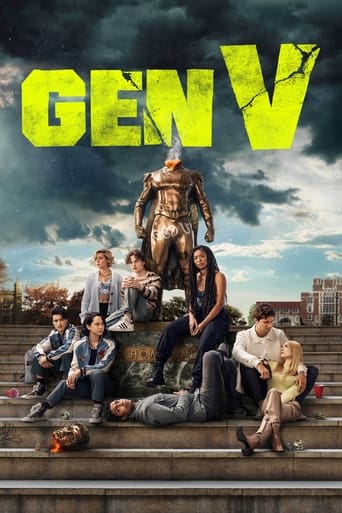
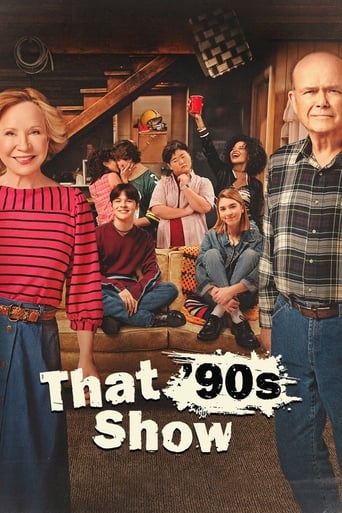
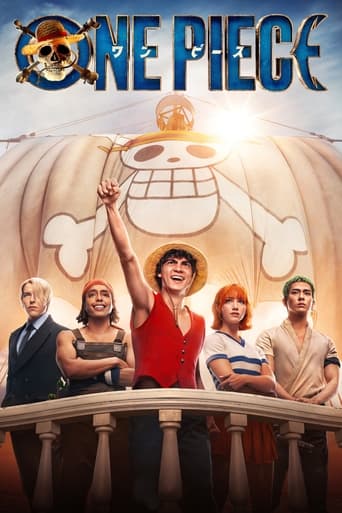
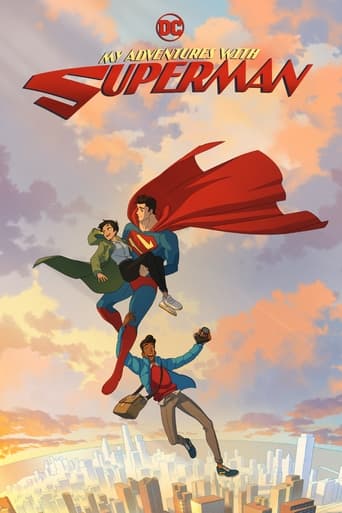

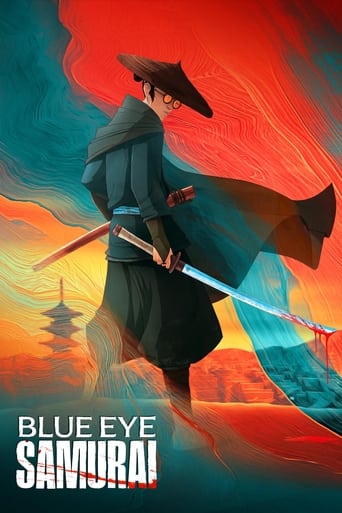
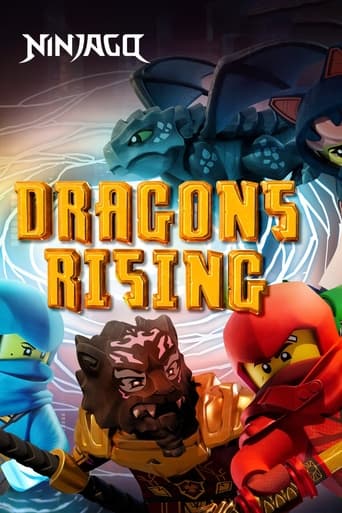
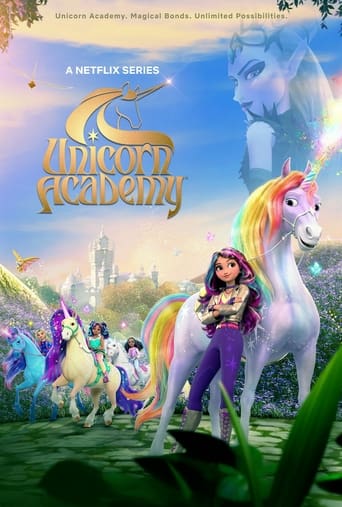


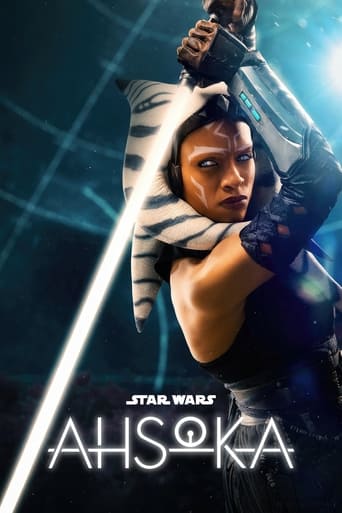

Battle B-Daman
Battle B-Daman or Battle B'Daman is an anime and manga series by Eiji Inuki that first aired in January 2004 in Japan, replacing Beyblade in its timeslot. It premiered in the United States on April 2005. Like its predecessor, it is themed around an enhanced version of a children's schoolyard game – whereas Beyblade was based around spinning tops, Battle B-Daman is a dramatized version of marbles. It is the first show of the B-Daman series to be dubbed in English. In Japan, it airs on TV Tokyo. In the United States, India it once aired on ABC Family and Toon Disney's JETIX block. At one point, as well as G4 in the USA, but on the latter was replaced by G.I. Joe Sigma 6 soon after. In Canada, it airs on YTV, in which on February 2007, the second season commenced with a completely new voice cast, and what some have called inferior dubbing from the first season; the French dub of the show airs on Télétoon.